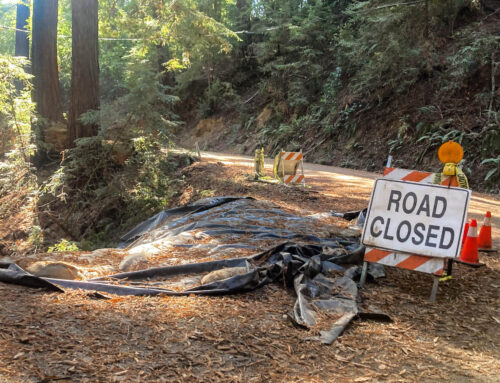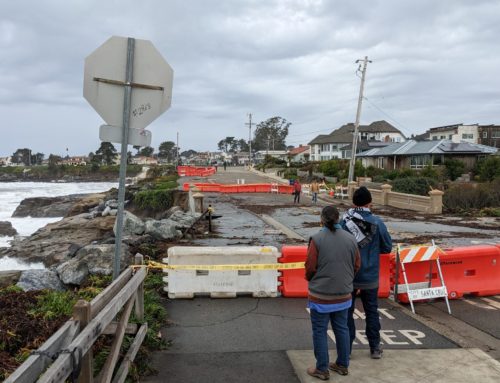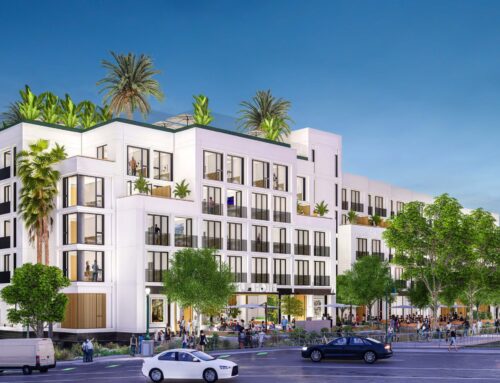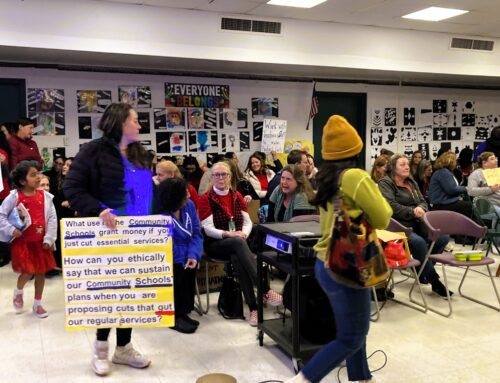Santa Cruz Local offers its city council coverage free as a public service. We want everyone to watch and get involved in local government. We think it makes our community stronger.
Santa Cruz Local depends on memberships from people like you to make sure vital information can be available to all. Can we count on your help?
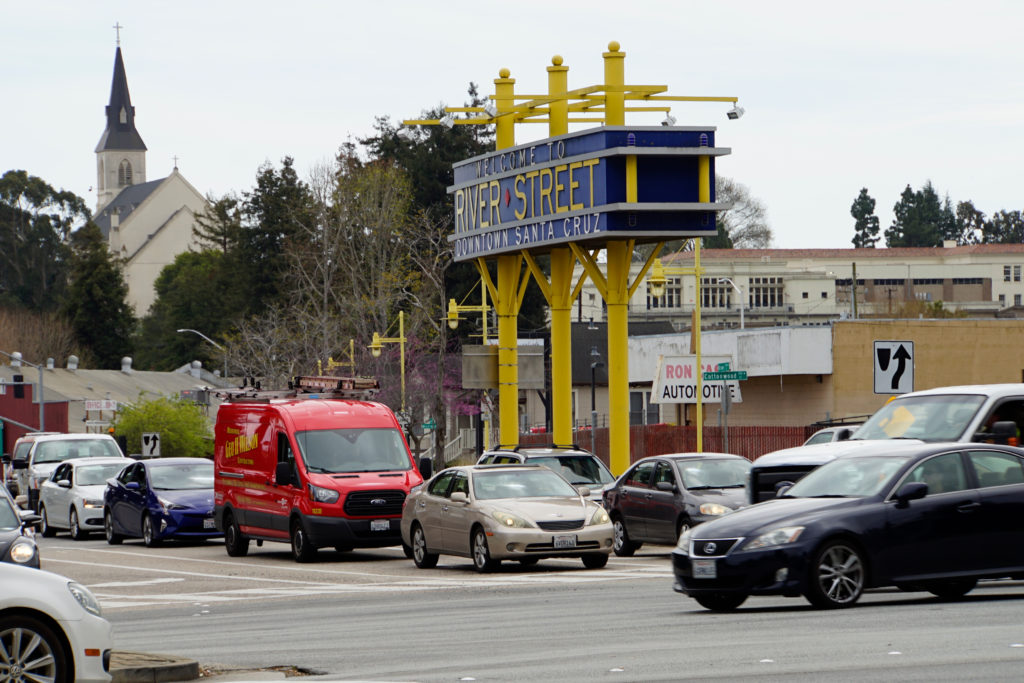
SANTA CRUZ >> The Santa Cruz City Council voted narrowly to approve a construction project aimed at improving the intersection of highways 1 and 9, despite objections from residents who said the city would fall short of its own climate policy.
The vote was initially 4-3 in favor of the project, but Mayor Justin Cummings switched his vote after a controversy over public hearings was settled, making the final vote 5-2. Councilmembers Katherine Beiers and Sandy Brown dissented.
“This project never made sense to me,” Beiers said. “We talk about following the data all the time as it relates to the coronavirus, but we do not pay attention to the data when it comes to these projects and the climate.”
Beiers echoed the statements from several of the speakers.
Rick Longinotti, with the Campaign for Sustainable Transportation, said the city continued to fall short of its goals for reductions in vehicle miles traveled and in-town car trips.
The nearly $5 million in grant funding for the project would be better spent elsewhere, he said.
“In order to reach the goals, we need to put our investments where our aspirations are,” he said.
But some council members said the money was required to improve the function and safety of the intersection that sees large volumes of traffic. Council members Martine Watkins, Renée Golder, Cynthia Mathews and Vice Mayor Donna Meyers voted in favor.
“This project is overdue in terms of safety considerations,” said Watkins.
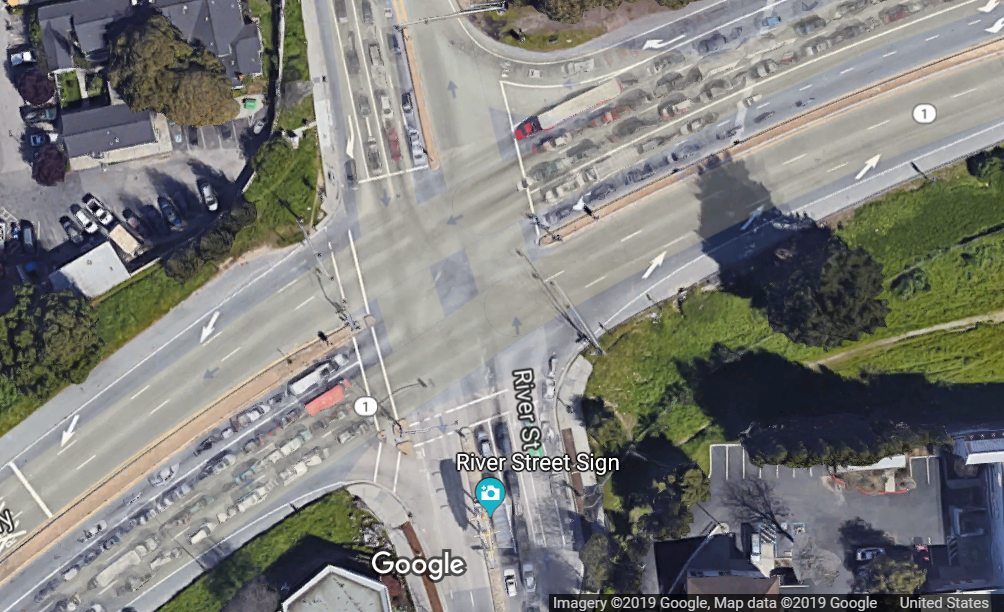
The project calls for the construction of an additional left-turn lane for cars heading south on Highway 1 to turn onto Highway 9, along with additional lanes on Highway 9 and River Street and other traffic improvements.
Councilmember Brown, who voted against the project, said the timing of the pandemic should cause the council to reconsider spending money on traffic enhancements amid a turbulent fiscal environment. She had previously supported the project.
“It’s a changing environment that calls for stopping and taking a look at what we are doing,” she said. “We are in a fiscal emergency.”
Brown and Cummings also expressed frustration after members of the public claimed the city failed to hold a public hearing as promised during the last meeting on the issue.
Cummings cited the failure as the reason for his no vote.
Chris Schneiter, assistant director of public works, said the city held a hearing at an indeterminate date, but it wasn’t enough to convince some of the council.
Later, after the vote was taken, city staff specified the public hearing was held in October. Once the date was firm, Cummings changed his vote.
Plans to improve the busy intersection date back to 2004.
At-large elections
The city council voted unanimously to declare its intention to shift from at-large to district elections, although the decision came more from outside pressure than urgency from residents.
With district elections, the city would be divided into districts and voters from each district would elect their own member for city council. Some say district elections are more fair, since it lowers the barrier for entry into politics and it would allow more say for Latino neighborhoods.
With the city’s current at-large system, each of the seven city council members represent the entire city.
Mayor Cummings said there wasn’t much clamor in the community for the change.
“There is not much of a preference to move to a district-based process,” he said before casting an aye vote.
But the city is eager to avoid litigation.
Robert Goodman, a lawyer from Santa Barbara, sent a demand letter to the city of Santa Cruz alleging the at-large system violates the California Voting Rights Act. Goodman said he represents Santa Cruz resident Gabriela Joseph.
Goodman, it appears, is in the business of sending demand letters to California cities. He sent a similar letter to San Luis Obispo in January.
Threats of lawsuit and similar complaints have been given to dozens of cities across the state. Most cities don’t challenge the lawsuit.
Santa Cruz received a similar letter last year from a different Santa Barbara lawyer and client. City leaders considered moving to district elections, until a legal investigation showed that the client was not registered to vote in Santa Cruz County, nullifying the complaint.
Santa Cruz City Attorney Tony Condotti advised the council that the costs of demographic studies and the demands on city staff were small in comparison to the millions of dollars that could be spent on a protracted lawsuit.
Should the city continue to move toward a district-based electoral system, the earliest it would come into effect would be 2022.
The council would have considerable discretion in establishing districts and the configurations — for instance, retaining an at-large mayor or other formats.
Crimes and misdemeanors
The city council voted unanimously to make violations of public health orders within the city limits an infraction instead of a misdemeanor.
“There is a sense in the police department, and in our office too, that these violations should be infractions,” said Cassie Bronson, deputy city attorney. “It’s more in line with a traffic ticket than willful criminal conduct.”
Some locals said the law did not go far enough in relaxing restrictions.
“It’s just a tool for the police to make more use of the penalties,” said Robert Norse, who noted misdemeanors entitle individuals to a more robust defense.
Bronson said the law needed teeth if the public health orders were to function properly.
“It’s always a last resort but there is a law enforcement element to this,” Bronson said.
Mayor Cummings said the change to an infraction also avoided an overly punitive approach.
“People would have a record and that is not what we are trying to do,” he said.
The city also unanimously extended the moratorium on evictions within the city for another month. However, City Attorney Condotti said that state policies on the eviction issue — including an order from the California Judicial Council to disallow evictions to proceed — took precedence over local laws.
The judicial council oversees the state’s court system. The judicial council’s rules last until 90 days after the governor lifts the COVID-19 emergency or until changed or repealed by the judicial council.
Kara Meyberg Guzman contributed to this report.
Matthew Renda is a freelance writer who has garnered multiple awards for his reporting. His work has appeared in the Santa Cruz Sentinel, the Mercury News, CNET, CBS News, The Atlantic and Outside Magazine. He lives in Watsonville with his wife, Jessica, and their two children.


